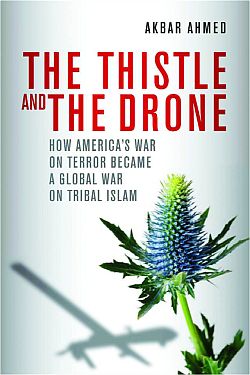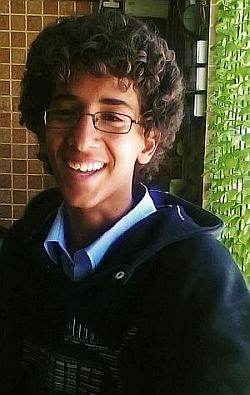NSA surveillance allowed the CIA to kill Hassan Ghul, a key al Qaeda operative, in a drone strike in Pakistan a year ago.
What further evidence could anyone need to accept that mass surveillance is necessary for America’s national security?
Sadly, that’s probably a strong argument in the sense that it’s an argument likely have its intended effect. Which is to say, if people believe that sifting through everyone’s email is what it takes to eliminate al Qaeda, then most Americans will probably acquiesce to this loss of privacy — a small price to pay in the fight against terrorism, so the thinking is meant to go.
The Washington Post reports:
It was an innocuous e-mail, one of millions sent every day by spouses with updates on the situation at home. But this one was of particular interest to the National Security Agency and contained clues that put the sender’s husband in the crosshairs of a CIA drone.
Days later, Hassan Ghul — an associate of Osama bin Laden who provided a critical piece of intelligence that helped the CIA find the al-Qaeda leader — was killed by a drone strike in Pakistan’s tribal belt.
The U.S. government has never publicly acknowledged killing Ghul. But documents provided to The Washington Post by former NSA contractor Edward Snowden confirm his demise in October 2012 and reveal the agency’s extensive involvement in the targeted killing program that has served as a centerpiece of President Obama’s counterterrorism strategy.
An al-Qaeda operative who had a knack for surfacing at dramatic moments in the post-Sept. 11 story line, Ghul was an emissary to Iraq for the terrorist group at the height of that war. He was captured in 2004 and helped expose bin Laden’s courier network before spending two years at a secret CIA prison. Then, in 2006, the United States delivered him to his native Pakistan, where he was released and returned to the al-Qaeda fold.
But beyond filling in gaps about Ghul, the documents provide the most detailed account of the intricate collaboration between the CIA and the NSA in the drone campaign.
The Post is withholding many details about those missions, at the request of U.S. intelligence officials who cited potential damage to ongoing operations and national security.
The NSA is “focused on discovering and developing intelligence about valid foreign intelligence targets,” an NSA spokeswoman said in a statement provided to The Post on Wednesday, adding that the agency’s operations “protect the nation and its interests from threats such as terrorism and the proliferation of weapons of mass destruction.”
So, for readers who don’t parse the reporting carefully, the narrative thread here is that contrary to the claims of its critics, the NSA isn’t in the business of spying on Americans; it has a vital role in hunting down terrorists.
But keep going — all the way down to paragraphs fourteen and fifteen:
The [leaked] documents do not explain how the Ghul e-mail was obtained or whether it was intercepted using legal authorities that have emerged as a source of controversy in recent months and enable the NSA to compel technology giants including Microsoft and Google to turn over information about their users. Nor is there a reference to another NSA program facing scrutiny after Snowden’s leaks, its metadata collection of numbers dialed by nearly every person in the United States.
To the contrary, the records indicate that the agency depends heavily on highly targeted network penetrations to gather information that wouldn’t otherwise be trapped in surveillance nets that it has set at key Internet gateways. [Emphasis mine.]
Or, to put it more bluntly, we have yet to be shown any evidence that mass surveillance plays any significant role in the war against al Qaeda. In tracking down Ghul, the crucial element appears to have been “a surveillance blanket over dozens of square miles of northwest Pakistan” — not a surveillance blanket covering the world.
And having said that, even while mass surveillance by the NSA seems to have prompted greater concern among Americans both inside and outside Washington than many other forms of America’s outlaw conduct over the last decade, the larger issue about which far fewer people show any interest is the policy of sanctioned assassination.
That an American president can now operate like a mafia boss is apparently OK — so long as every man on his hit list has an Arabic name.



